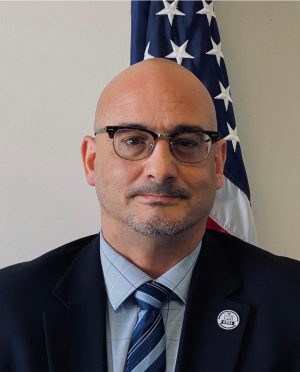Policymakers Must Recognize the Realities of Public Safety

By Neil Pellone
A new world of public safety is upon us. One that has been brewing for many years and directly affects each and every one of us and our families.
In 2019 alone we have seen a number of legislative proposals and enactments that have threatened the sanctity of public safety. From the temporarily sidelined HALT legislation seeking to curb custodial management methods in jails, to the sweeping changes in bail reform effective Jan. 1, these well-intentioned policies are being improperly implemented and dangerously compromise law enforcement’s ability to protect and promote public safety.
Take bail reform, for example. It seems in the haste to enact such change, the reforms appear to have been implemented with very little thought on the impact on public safety. The new laws will essentially eliminate pre-trial detention and cash bail on nearly 90 percent of misdemeanor and nonviolent felony arrests. This means criminal defendants will be given desk appearance tickets, released on their own recognizance and be expected to voluntarily return to court. Judges can no longer consider a defendant’s criminal history or whether he or she poses a danger to the community. Not surprisingly, many are now clamoring for a rollback of these reforms.
With these changes in bail reform, jail populations will be significantly lowered initially. With the reduced populations will come a knee-jerk reaction to question minimum staffing levels. For example, on Nov. 25, during the Board of Legislators’ Budget & Appropriations Committee meeting, county Corrections Commissioner Joseph Spano fielded many questions about minimum staffing standards; the main focus of the inquiries focused solely on saving money.
Staffing minimums are set by the state Commission of Corrections because they are deemed to be, at minimum, what is necessary and required to maintain not only safe jail operations and the security of all jail constituencies – inmates, officers and civilian staff – but the general public. Staffing is based on operational needs dictated by fluctuations in a number of factors, including increases in officer duties inside or outside the jail facility and the needs of the inmate population, especially those with mental health issues.
There can be as many as a dozen constant observation posts in a 24-hour period. Broken down and simplified, this equates to a single officer per inmate on three shifts for up to 72 hours, if not longer, based on mental health evaluations, quarter-hour documentation and daily monitoring, increased inmate programs and services, the need to ensure there is no forced overtime and workforce attrition.
Add to this the unknown long-term impact of bail reform and a potential increase in the population of sentenced inmates moving forward, there is no question that current staffing levels are necessary.
Corrections officers’ work is not limited to just providing security within jail cells. There are many multifaceted roles we play in preserving public safety. For example, the Westchester Department of Corrections, celebrated its 50th
anniversary this past year, has been a vanguard among correctional institutions in the provision of rehabilitation and re-entry programs. There are currently 32 programs offering inmates a variety of tools, strategies, therapies and skill development opportunities that ensure an inmate’s successful transition back into the community in a way that reduces risk of recidivism.
These programs are provided onsite at the Westchester County Jail under the watchful eye of corrections officers who not only provide inmate escort to and from the programs, but also ensure a safe, non-violent environment for inmates and civilian instructors in which the programs can be administered. Without corrections officers providing integral safety and security, the goals and objectives of these programs, which ultimately protect and promote public safety, could not be met.
I implore our policymakers to visit the Westchester County Jail. Come learn about how the Department of Corrections, a nationally accredited institution offering exemplary inmate programs, operates. Learn about what we as corrections officers do to make this institution a success. Ours is a 24-hours-a-day, seven-days-week, 365-days-a-year job that ensures public safety. Come learn about our training, the duties we have both inside and outside of the jail and how we perform them with the utmost professionalism while risking injury and illness to ourselves every day.
After all, our safety depends on it.
Neil Pellone is president of the Westchester Correction Officers Benevolent Association.

Examiner Media – Keeping you informed with professionally-reported local news, features, and sports coverage.
